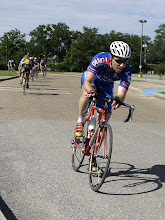Please leave the mud on your shoes and pedal better
Most everyone has heard that you need to "scrape the mud off your shoes" while pedaling. Often, clients come to me and voice this phase as a description of what they are trying to do at the bottom of the stroke. However, this image provides for critical errors in technique that cost the cyclist and create a loss of power.
Let's consider the image. If I attempt to scrape the mud off my shoe, I immediately think of a standing activity where I force my heel down and pull back with my hip or gluteal muscles. My knee is straight or almost straight. Now, compare that image to the position and muscle activity when the pro cyclist is at the bottom of the pedal stroke. Their knee is flexed and their toe is pointed down. From a muscle activity perspective, the gluteal muscles are shutting off because the hip is translating from extension to flexion the gastroc muscles are active with the hamstrings because they are secondary knee flexors. It's a completely different movement compared to scraping mud off your shoes.
Engaging the pedal at the bottom of the stroke is of utmost importance. Let's try a different image: "Actively bend your knee through the bottom of the stroke". Practice this while on a trainer. Place your foot at the bottom of the stroke. Hold the right/rear brake. Try to start pedaling with the heel down vs. heel up. Heel up engages the hamstring muscle to the greatest extent. Pulling back with the heel down engages the glutes which is completely out of phase at this portion of the pedal stroke.
Those cyclists with their saddle too high are actually at risk for injury if they try to drop the heel. It will cause the knee to extend too much which puts the knee in danger. Ultimately, the body will not let this happen and you will move back and forth on the saddle as a consequence. Way uncomfortable! and you can't ride a straight line.
Cyclists with their saddle too low will have the greatest tendency to drop the heel because the body is trying to find an efficient place to move. However, with the saddle low and heel dropped, you will loose power because you can't engage knee flexors effectively.
Placing the athlete in the athletic start position is a goal of a good bike fit. The athletic start position is the short stop waiting for the batter to hit the ball or a linebacker waiting for the snap. It's the position of greatest muscle capacity. From here, the cyclist can learn to move in a manner that provides the greatest power.


0 Comments:
Post a Comment
<< Home